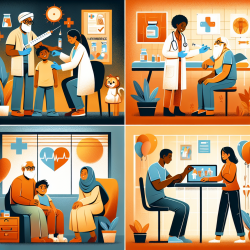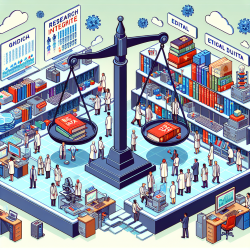The COVID-19 pandemic has challenged healthcare systems worldwide, pushing them to their limits. While initial responses focused on hospital preparedness, the long-term solution may lie in strengthening primary and community healthcare. A research article titled "Improved strategies to counter the COVID-19 pandemic: Lockdowns vs. primary and community healthcare" provides insights into how these sectors can play a pivotal role in pandemic mitigation.
The Case Against Strict Lockdowns
Lockdowns were initially seen as a necessary measure to curb the spread of COVID-19. However, they come with significant social, economic, and health consequences that cannot be ignored. The research highlights that while lockdowns can temporarily reduce virus transmission, they are not a sustainable long-term solution. Instead, they often lead to a cycle of repeated lockdowns, each with diminishing returns and increasing harm.
The Role of Primary and Community Healthcare
Primary and community healthcare have been identified as crucial components in managing the pandemic. These sectors can alleviate pressure on hospitals by providing early diagnosis, treatment, and monitoring of COVID-19 patients outside hospital settings. This approach not only helps manage COVID-19 cases but also ensures continued care for non-COVID-19 conditions.
- Primary Prevention: Education campaigns, risk stratification, and managing comorbidities can reduce severe COVID-19 cases.
- Secondary Prevention: Early detection through testing, contact tracing, and supportive treatment can prevent hospital overload.
- Post-COVID Care: Rehabilitation and management of post-acute symptoms are essential for patient recovery.
Learning from Greece's Experience
The research uses Greece as a case study to illustrate the consequences of neglecting primary and community care. During its second wave of COVID-19, Greece faced high death rates partly due to its focus on hospital preparedness at the expense of other healthcare sectors. This oversight led to overwhelmed hospitals and inadequate management of mild cases at home or in community settings.
Recommendations for Practitioners
To improve pandemic response, practitioners should consider implementing strategies that enhance primary and community healthcare:
- Expand Testing Capacity: Ensure widespread access to testing through both public and private sectors.
- Create Support Networks: Develop local teams to provide home care and support for isolated patients.
- Enhance Communication: Use technology for remote consultations and patient monitoring.
- Focus on Vulnerable Populations: Prioritize care for high-risk groups to prevent severe outcomes.
The integration of these measures can create a more resilient healthcare system capable of handling current challenges while preparing for future pandemics.
If you're interested in exploring this topic further, I encourage you to read the original research paper: Improved strategies to counter the COVID-19 pandemic: Lockdowns vs. primary and community healthcare.










